Successful nesting is the driving force of bird breeding behavior. The challenges, however, are many. The causes of nest failure include predation, starvation, desertion, hatching failure, and adverse weather. Here we see how birds build their nest, materials used and the types of complex nest, some wierd materials birds use for nest construction also about bird nest soup and harvesting one, we also see common nest failiures and how birds manage to survive.
How do birds choose nest type and design?
There are a few factors. One is what works.
If a nest on the ground is sufficient to raise healthy chicks, why bother building something more difficult?
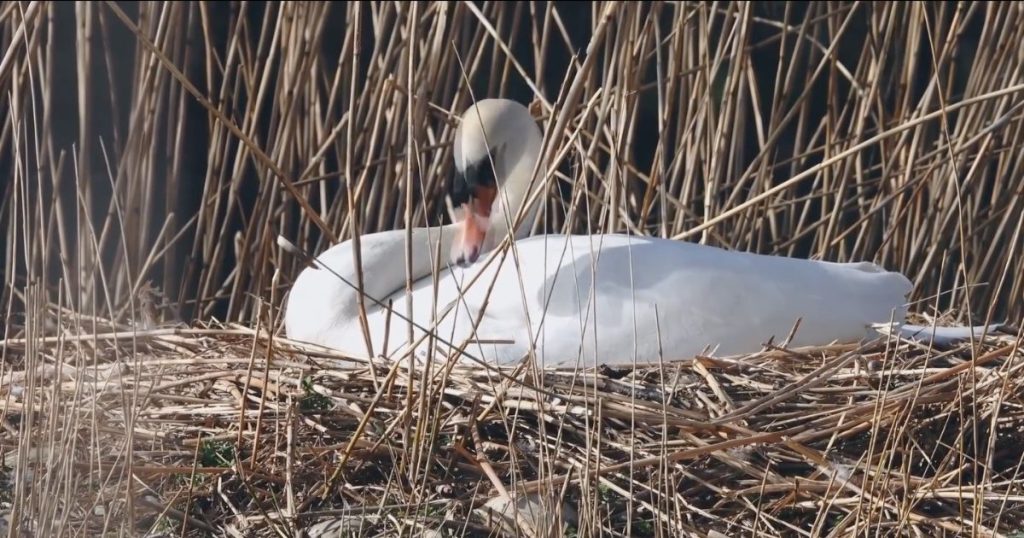
But another factor is predators.
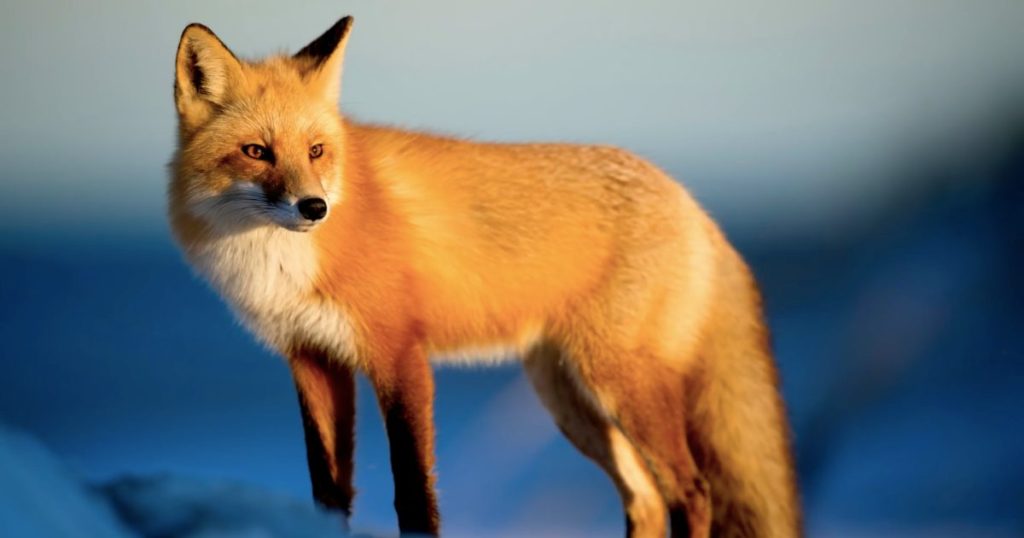
You’ll notice that each step up the nest complexity ladder offers more security to the chicks. Starting on the ground, then out in the water, then up in a tree, then inside a tree, then on a cliff face.
It’s more difficult to construct these nests, but it’s harder for predators to get to them, which should mean more successful chicks.
We look at some complex nests birds build on ground trees even in water,
The diverse nesting behaviors of birds correspond to their diverse solutions to the local challenges in reproduction. Most birds build isolated hidden nests. The nests of approximately 20 percent of all bird species remain unknown or poorly known to science.
Open-breeding colonies
At the other extreme are conspicuous, open-breeding colonies, some with millions of pairs. In Africa, from 2 million to 3 million pairs of the finchlike Red-billed Quelea nest in less than 100 hectares of thornbush savanna. On the Peruvian coast, black-and-white Guanay Cormorants pack together at densities of as many as 12,000 nests per acre and attain colony sizes of 4 million to 5 million birds. The burrows of nocturnal auklets, petrels, and shearwaters riddle the hillsides of some oceanic islets.
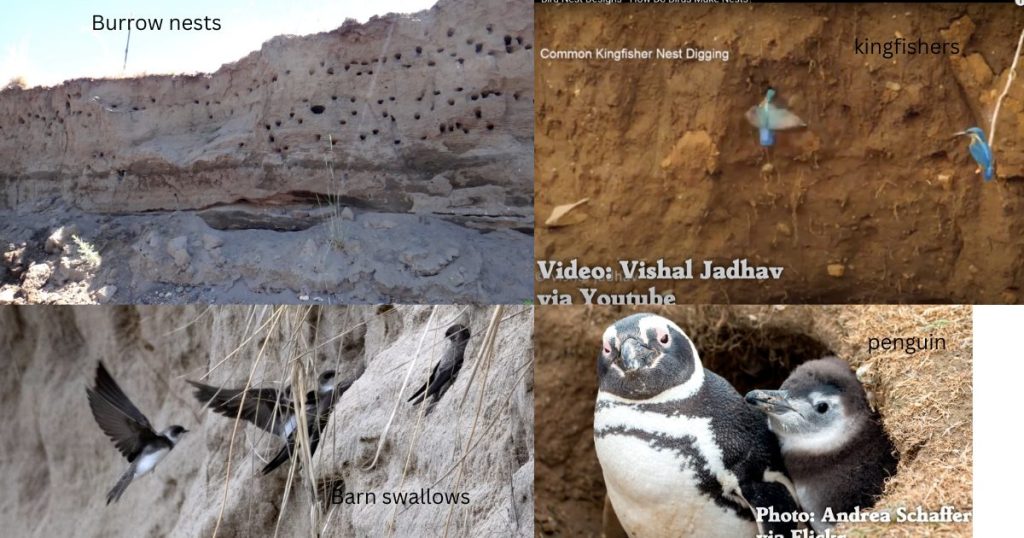
Birds build nests to protect themselves, their eggs, and their young not only from predators and also from adverse weather. Structure and function are inseparable in nest architecture. Conspicuous nest features provide protection. Subtle features aid in the regulation of temperature and humidity.
Complex nests built by some birds,
Swifts and swallows sometimes make nests out of mud, sometimes out of wood glued together with dry spit, and sometimes they just build a nest out of dry spit with nothing else.
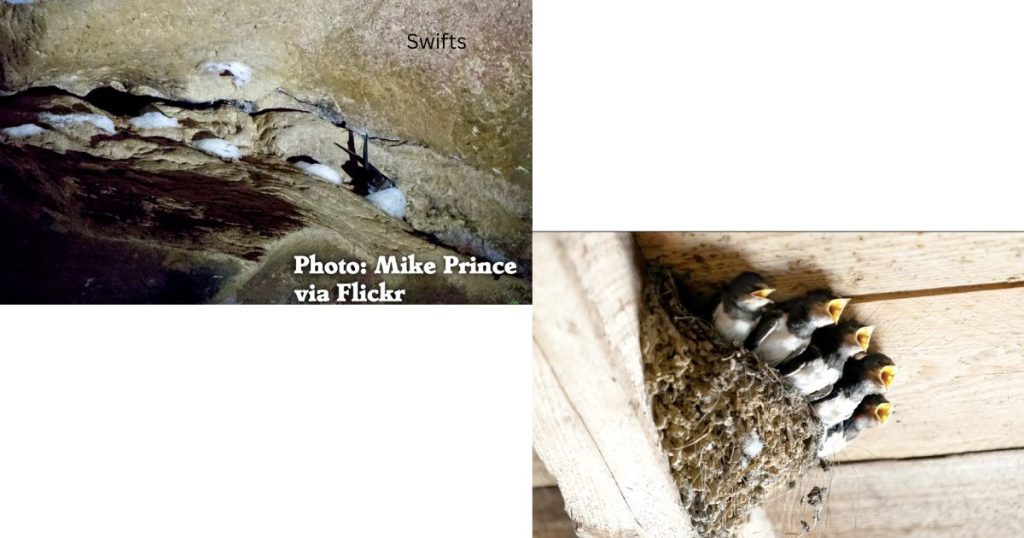
The Hornero these complicated nests are made of dry mud,
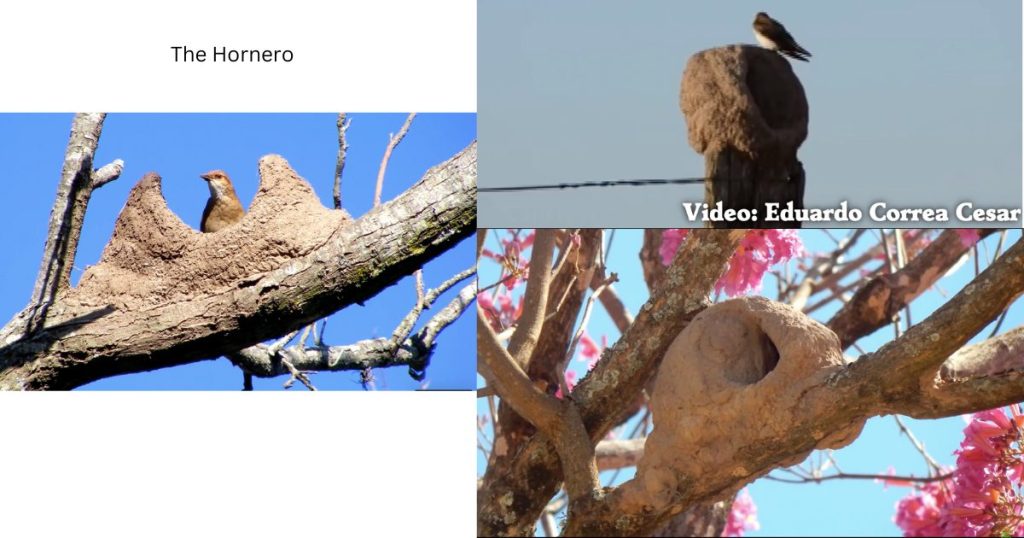
collected over a few months, and allowed to dry in the sun. Cool birds. Cool nest!
The Oropendola builds big, hanging nests. A colony can have around 100 nests, made of woven grass and leaves.
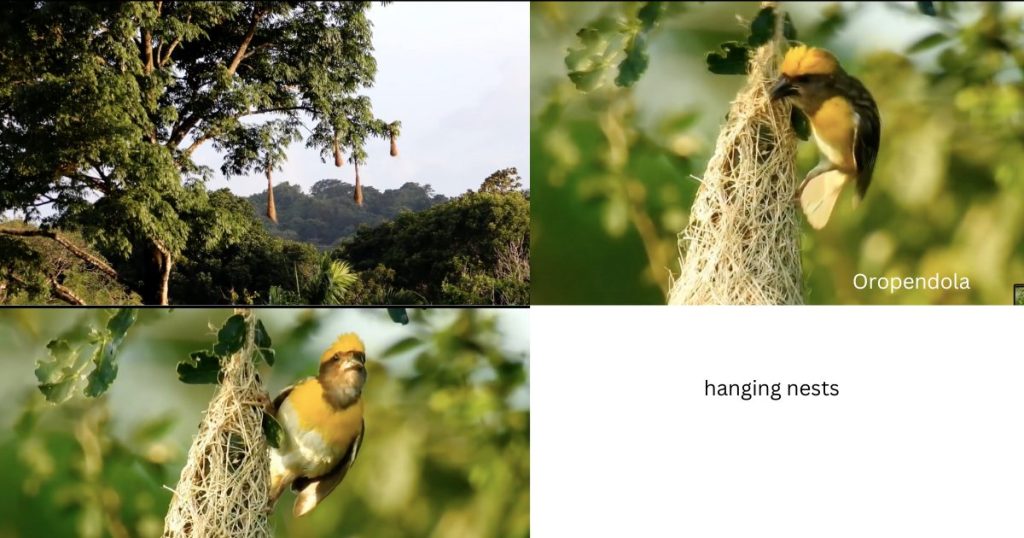
Weavers weave nests out of grass.
The finished product is like a ball with openings that are just wide enough to let in the parents. Males build a nest, or if they are skilled, build several nests, and if females like it they move in. Their nests are pretty impressive on their own, but check out the sociable weaver nest. This is the work of maybe thousands of individual birds, working on one permanent, giant nest together. It has around 100 individual chambers and can provide a home to generations of weavers for decades.

There are many types of bird basic nests, but they fit into some broad categories. Here are some examples of each.
No nests
Emperor and King penguins dont make nests at all, but stand still, holding their eggs on top of their feet. There always has to be an exception to every rule in biology, and these penguins are it.
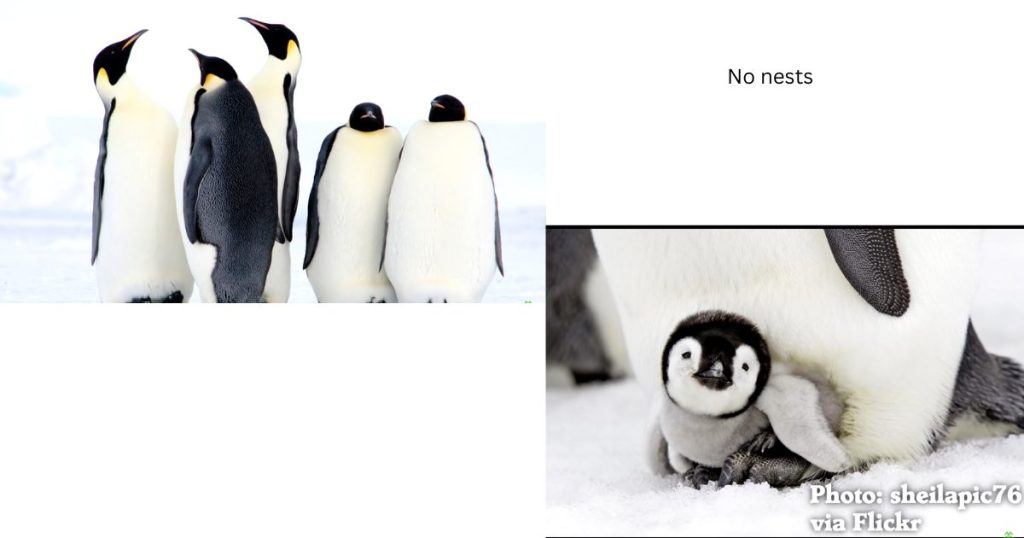
Scrape nests
Scrape nests are on the ground. Not only that, they often are the ground. This is the simplest actual nest possible, and many birds use it. Gulls, New World Vultures, Sandpipers, and other shorebirds. Some penguin species also use scrape nests.
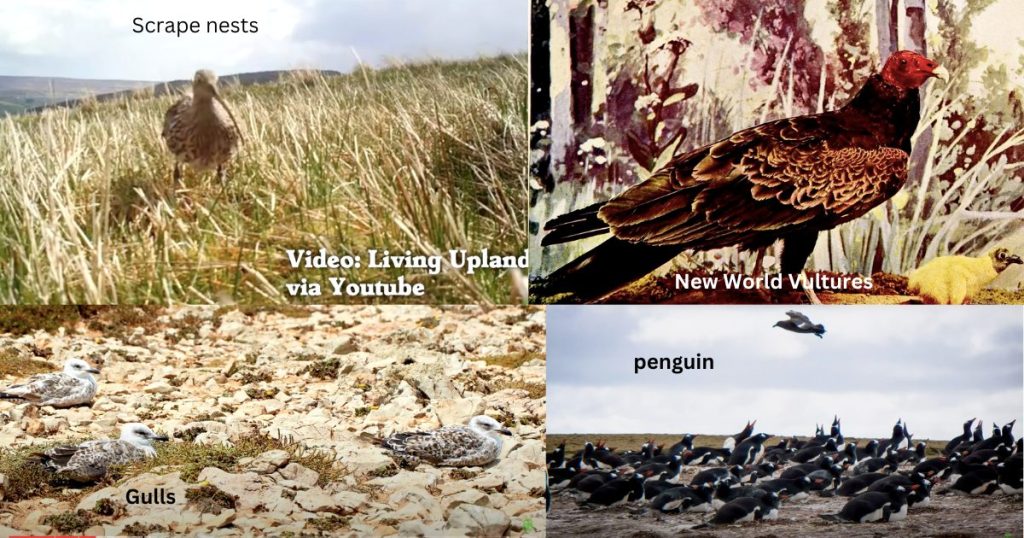
Burrow nests
Some birds burrow into the ground to make a shelter. Barn swallows dig using their beaks and wing feathers to push dirt. Most species of kingfishers dig nest holes in the ground like these are doing, though some kingfishers live in tree hollows instead. Burrowing owls do not usually dig their nests, but instead find a hole dug by a different species and move in. Some penguin species use burrow nests, also.
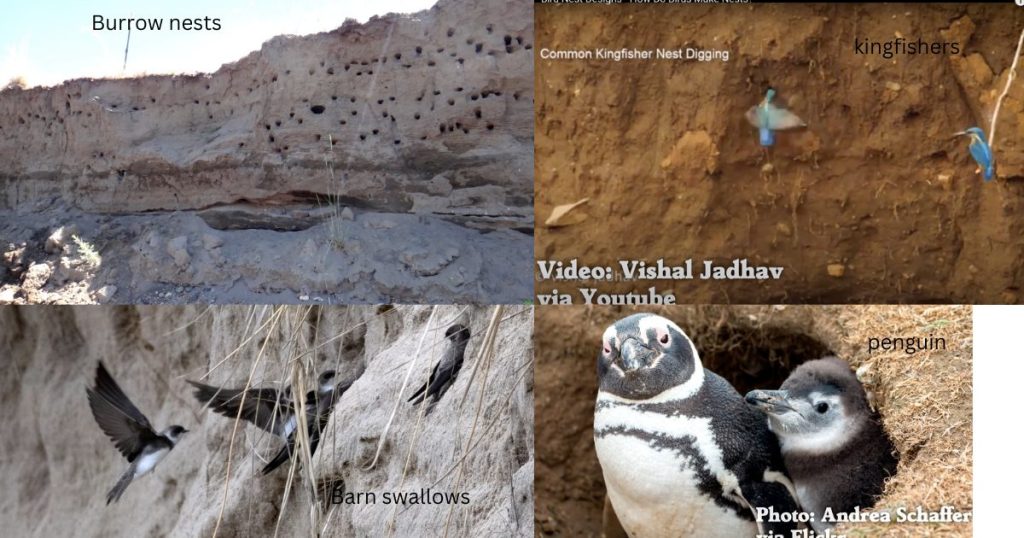
Low platform nests
These birds collect sticks and leaves and pile them on the ground.
Grebes make floating nests in shallow water. Some penguin species build low platform nests out of rocks.
Elevated platform nests
We’re finally off the ground! Some birds, like pigeons, make a pile of sticks and leaves and put them in a tree or cliff face, or this case, an apartment building. This is what a pigeon nest looks like. And here is a baby pigeon, called a squab.
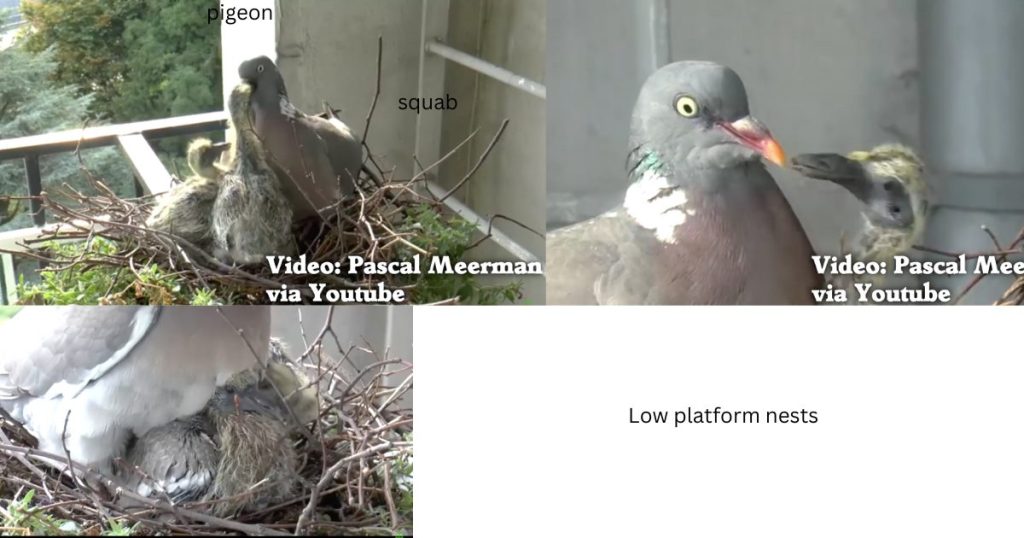
Cup nests
This is the nest you would draw if someone told you to draw a bird nest. They sit somewhere secure like the fork of a branch, they are cup-shaped to keep the eggs inside and warm. Many, many species make this type of nest. Robins are an example.
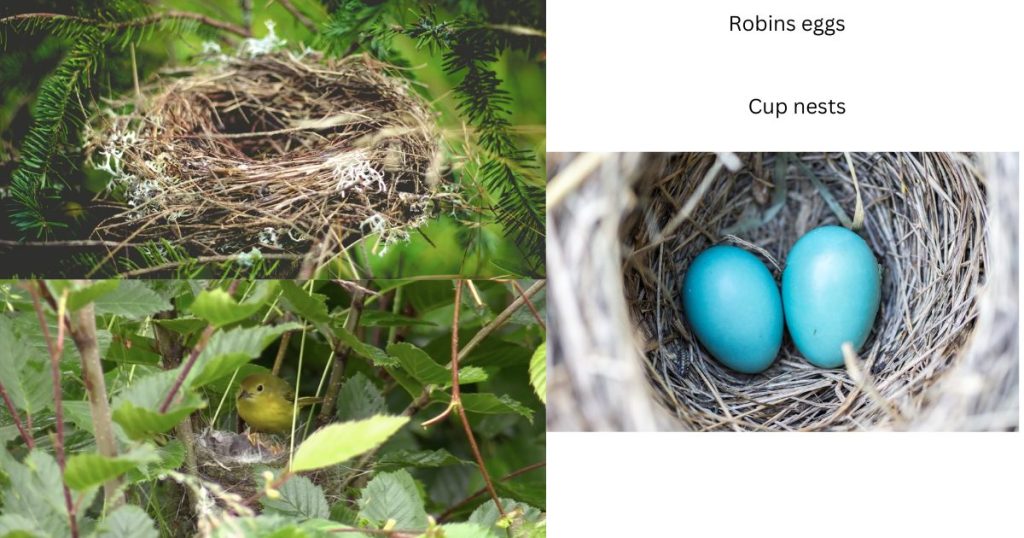
Suspended Cup nests
Now we take the cup nest and hang it on the side of a branch. Vireos make this type of nest.
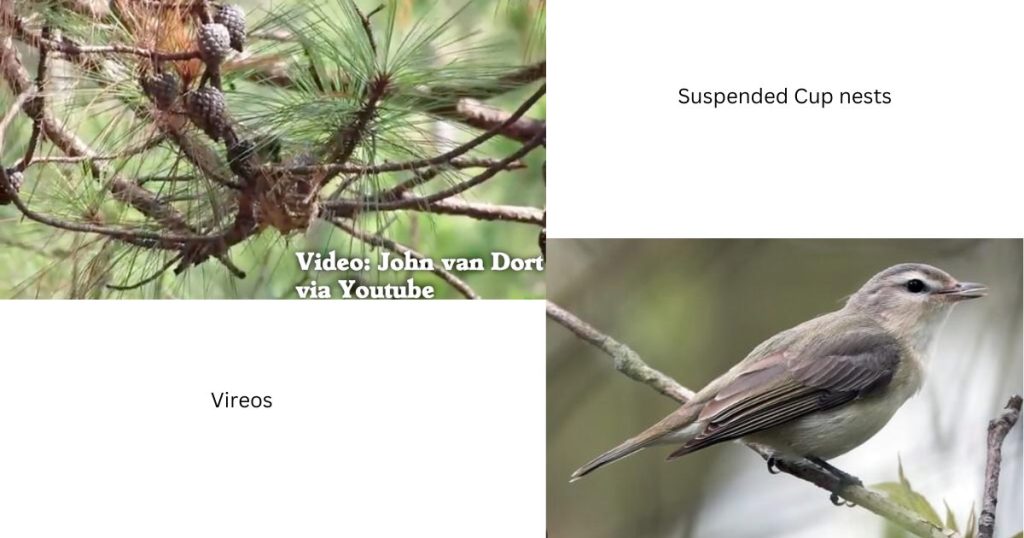
Pendulous Cup nests
The cup nest is now hanging way down from a branch. Orioles make this style of nest.
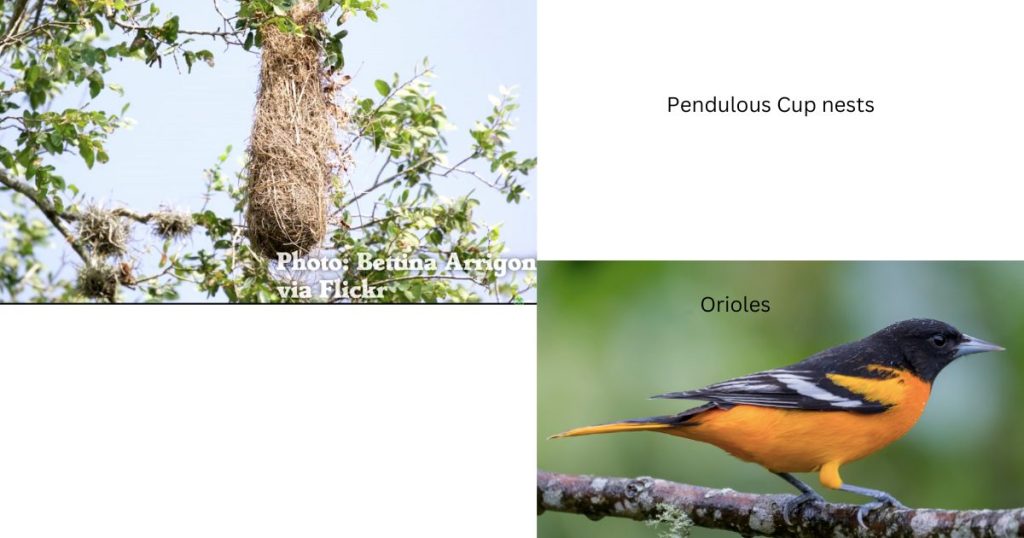
Cavity nests
Why live on a tree when you can live IN a tree?
Many birds use the safety and shelter of natural tree hollows. Many owl species, Wood ducks and some other waterfowl.
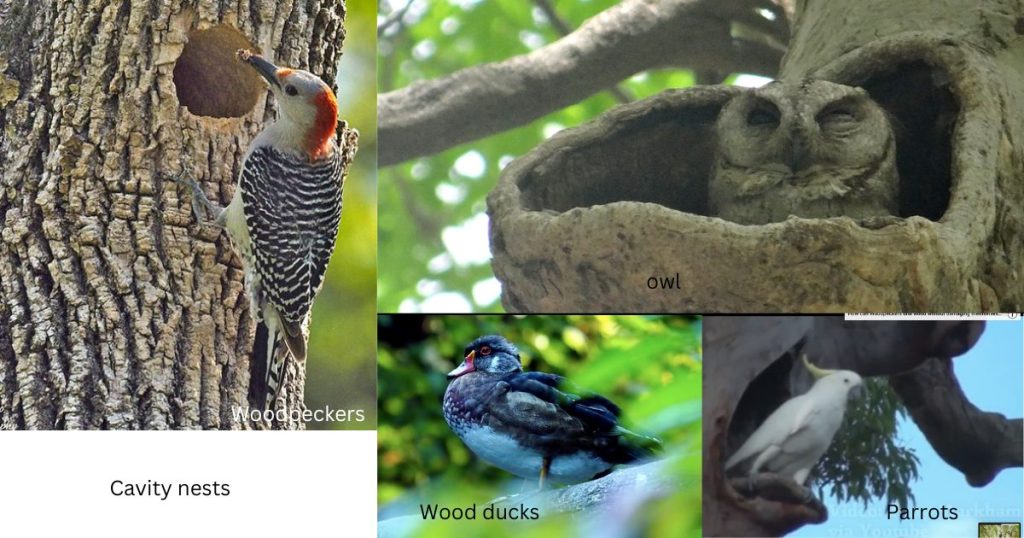
And some birds make their hollows. Woodpeckers are the famous ones, who use their strong beaks to cut through wood. Parrots also make their hollows. Very slowly, but persistently, carving a wood cavity with its beak. Those beaks are optimized for other tasks, but they do work.
Materials used for nest construction
Nests may be casually constructed from ready-for-use pebbles and sticks or laboriously woven from natural fibers. Animal products, plant matter, and inorganic materials, including mud pellets, rocks, tin foil, and ribbons, are used in nest construction. Selected aromatic plant materials provide fumigants to repel parasites.
Unusual nesting materials
Beyond basic construction materials, birds use spiderwebs for mooring or adhesion and feathers and hairs for the final lining. Feathers are often a major component of the nest and, especially, the nest lining. The nests of Long-tailed Bushtits and Goldcrests found in Europe may contain 2,000 or more feathers. Waterfowl pluck down from their breasts, and the Superb Lyrebird plucks down from its flanks to line the nest. Many birds pluck hair, also a premium nest-lining material, from livestock. Galápagos Mockingbirds snatch hair from the heads of surprised tourists.
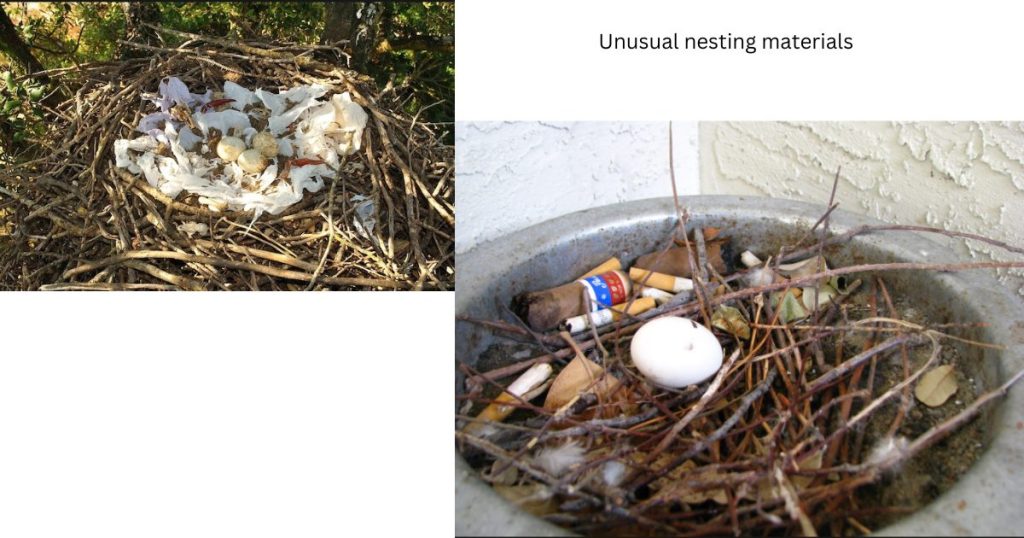
Nesting Decoration and Fragnance
Nests made of plant matter may contain twigs, grass, lichens, and leaves. Some birds add green vegetation that helps to combat disease and ectoparasite infestations. In general, hole nesters incorporate fresh and green vegetation more regularly into their nests than open nesters. Common Starlings are selected by the odor of certain plants, such as red dead nettle and yarrow, which contain volatile chemical compounds that inhibit the growth of bacteria and the hatching of the eggs of arthropod nest parasites. The experimental removal of these green plant materials leads to a dramatic increase in the populations of blood-sucking mites, tiny parasites that can drain the blood volume of a starling chick.
How long does it take a bird to make a nest?
The amount of time required to build a nest depends on how complex the nest is. But it’s a lot shorter than what we thought it would be. It may take, like, a month to find the perfect nesting spot, then find all the right materials and assemble them in the perfect configuration. And then finally lay the eggs. But it turns out that most songbirds get that done in two to ten days.
Woodpeckers can take a little longer, maybe three or four weeks, but they are carving their nest out of wood with their faces. You can see there’s an amazing array of nest architecture, from the simple to the complex. But every nest has the same basic function.
Does a bird sleep in a nest? Where Do Birds Go At Night?
It depends on the lifestyle of the bird in question, they need to find a safe place not exposed to the elements to sleep at night it could be a favorite cavity a dense Bush a set of leafy trees in a particular forest or even an abandoned building some will hide somewhere singly while others will join nocturnal roosting flocks with more eyes to watch out for danger it’s safety in numbers one could say.
Do some birds steal other birds’ nests?
Birds go to extremes to get prime materials, which are be in short supply. Thievery is common practice, especially in large seabird, heron, and penguin colonies. It is often much easier to steal than to collecting fresh materials. Competition for small stones can be intense at Adelie Penguin colonies. Female Adelie Penguins have been observed soliciting copulations from extra-pair males in exchange for the opportunity to take as many as 10 pebbles from that male’s nest.
History of Bird Nest Soup
Most swifts (subfamily Apodinae) use their own, hardened saliva to glue their stick nests together. Palm swifts mix their saliva with fine plant fibers to create a felt-like material. Entirely self-sufficient are the cave-nesting Edible-nest Swiftlets of Southeast Asia. They make their nests entirely of their own (hardened) saliva. This sticky form of glycoprotein cements the nest together and attaches it to a cave wall. Because this unusual glycoprotein maintains its gluey consistency even when cooked, swiftlet nests are a critical ingredient of bird’s-nest soup. This gastronomic delicacy supports a substantial trade in harvested nests for sale to the Asian food industry.
How much does bird nest soup cost?
The nest of the Edible-nest Swiftlet is entirely composed of the bird’s hardened saliva. The unique glycoproteins in the nests have been used for centuries in various East Asian countries to thicken the bird’s-nest soup, where it is viewed as a delicacy and a health tonic. High-quality swiftlet nests are very valuable and can fetch prices of $2,000 to $3,000 per kilo—about $85 per ounce or $20 per nest. Over the 20th century, the unregulated harvest of the nests from swift colonies in caves contributed to the endangerment and even extinction of many local populations.
How birds survive predators?
Effects of nest predation
Predation causes by far the greatest number of annual nest losses, in all habitats and on all continents. Predation on nests and their contents highly reduces breeding success: more chicks may leave the nest through the stomach of a predator than on their own. This mega source of natural selection affects not only nest architecture and nest placement but also the evolution of life-history traits, such as clutch size. Nest predation also forces species to compete locally for limited safe nest sites and thereby affects which species can coexist.
Do birds hide their nest from predators?
Songbirds hide their smaller nests in diverse sites, including green plants overhanging the water and the outer twigs of bushes and trees, or suspend them from vines. Domed nests that hide the contents from predators overhead came to characterize many of the smallest songbird species throughout the world. The woven nests of weavers and caciques dangle from crowded tall trees, often over water.
Thanks for learning about birds nest with me.